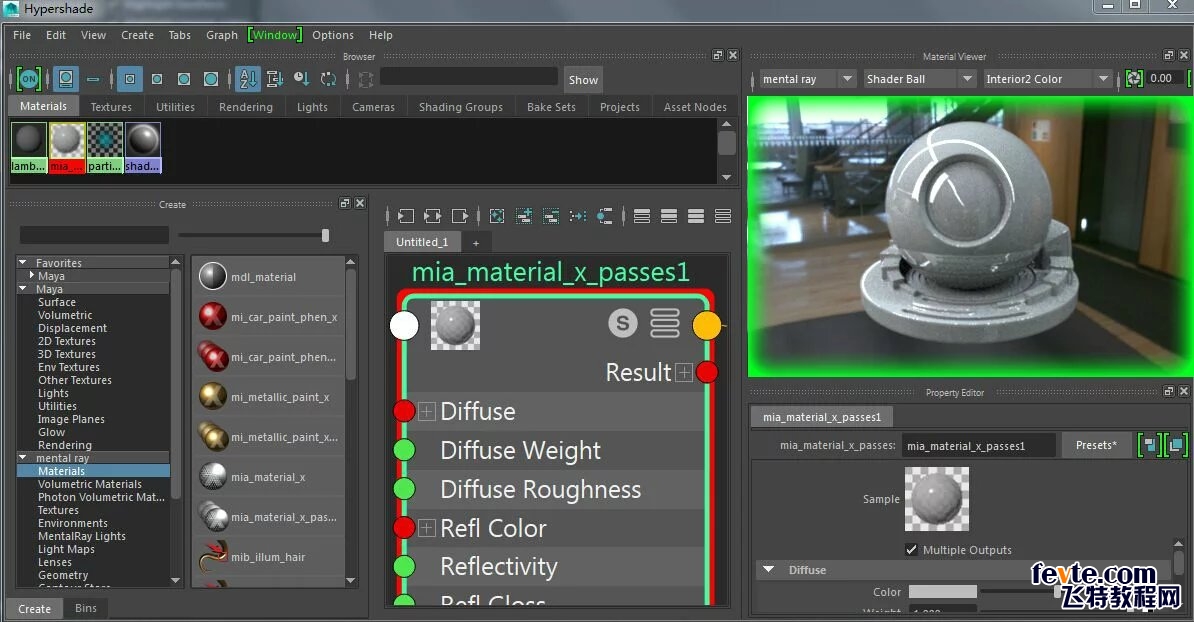

#MENTAL RAY FOR MAYA 2016 WHATS NEW SOFTWARE#
One problem with this reliance on third party solutions (aside from the fact that C4D costs just as much as Maya and shouldn't require another $2k in software to hit feature parity) is that Maxon has built C4D to be incredibly closed up and difficult for plugin developers to integrate into, so everything feels very bolt-on and lacking compared to their Maya counterparts. and it's like this for almost every feature people take for granted with other packages. GI and photorealistic shaders? Slower than molasses, embarrassingly behind the curve and missing vital features - better go get Vray, Octane etc.

Particles? By far the worst of all major 3D software - better go get x-particles. The reality is, while it has some cool and helpful features like mograph and a nice material preview system, almost every other area is lacking and requires third party solutions. Not a good sign.Ī few years ago I switched from Maya to C4D because my employer used it, and I had heard good things. C4DCafe, long considered the singular go-to website for all things C4D, was boiling over with anger and disappointment at Maxon recently, to the point that the site's founder and most vocal C4D proponent (Kiwi) bailed on C4D, switched to Modo and sold the website. It has gone downhill and completely failed to stay competitive over the last few years, and even its longtime supporters have been abandoning it in favor of other packages. Use the standard value if no artefacts at edges in the image are visible.Not sure what /u/vicinalmoon is referring to with C4D, because the opposite is true. A higher value for the width and height will translate into soft edges in the image. The final pixel in the image will therefore not contain any out-of-range values _produced by the filter_, as might be the case for regular Mitchell and Lanczos filters.įilter Width and Height: Gives the amount of pixels that will be used in the filter calculation. The filtered result samples are clipped to the min/max range of input samples. Because "plain" Lanczos and Mitchell may produce negative values the new filter types are "clipped" variants to ensure positive values. Mitchell (clip) and Lanczos (clip) are alternatives to Gaussian that offers slight variations in contrast (tends to increase). Produces the best results, but is the slowest to render. More processor intensive than box, but offers even better results. The fastest way to get relatively good results. Filtering looks at neighboring info and unifies the two. This is processing performed on the results of the sampling to blend pixels into a coherent entity. This is the absolute maximum number of samples per pixel used when processing an image.įinal renders: 0.05 0.05 0.05 Multi-pixel Filtering

Based on contrast sensitive (adaptive) settings, mental ray for Maya will increase these samples as needed. This is the guaranteed minimum number of samples per pixel used when processing an image. Change to Legacy Sampling Mode and leave Legacy Sampling Mode to Adaptive Sampling which is recommended for most cases. Try to find the solution that gives you the best balance between image quality and performance. Most solutions to control aliasing are time consuming and increase render times. You can make adjustments to a number of settings to decrease or eliminate aliasing artifacts and flicker. Because there are many kinds of aliasing, such as grainy surfaces, flickering, and jagged edges, there are as many approaches to controlling or fixing these problems. Aliasing artifacts can result at various stages during any rendering process.Īnti-aliasing is the process of removing or reducing these artifacts. Jagged or stair-cased edges in pixel-based images or flickering surfaces in an animation are aliasing artifacts.Īliasing artifacts result from point sampling, a process used in all computer graphics applications that determines the information about each pixel. This will smooth out the artefacts, which will appear at the edges of surfaces and on the textures you use. One important part of the quality of the rendered Mental Ray image is the anti-aliasing of the image.


 0 kommentar(er)
0 kommentar(er)
